Nubia RedMagic 5S review: a diamond in the rough


Read in other languages:
Nubia, a subsidiary of ZTE, returns to the gaming smartphone scene with the RedMagic 5S. Equipped with a Snapdragon 865 chipset, a 144 Hz AMOLED display, 12 GB of RAM, UFS 3.1 storage, a 64-megapixel triple camera module, haptic-feedback triggers, and a monstrous 4,500 mAh battery, this is a powerful beast that retails for less than €600.
Good
- Fully functional gaming design
- Snapdragon 865 chipset
- Solid battery life
- Beautiful 144 Hz AMOLED screen
- Useful Game Boost mode
- Good temperature control
- Relatively decent price
Bad
- Geared towards gaming only
- Poor camera performance
- Poor RedMagic UI 3.0 Interface
- The buttons and accessories are not very ergonomic
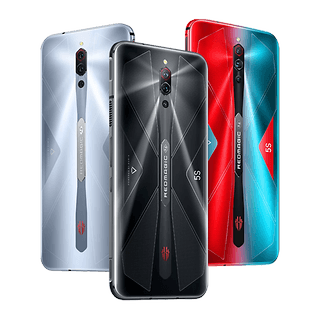
Who is the Nubia RedMagic 5S for?
I have listed the extremely impressive specifications sheet for the RedMagic 5S as part of the introduction to this review. On paper, the smartphone is a direct competitor to the Asus ROG Phone 3, which is to me, the most successful gaming smartphone on the market in 2020.
Except for one thing: the ROG Phone 3 sells for a whopping €999. The RedMagic 5S offers far more bang for your hard-earned buck. The basic model, which is an 8GB RAM/128GB storage configuration has been available since September 2nd for €579 in Europe. For those who want something that packs more punch, there is a 12GB RAM/256GB storage model that will retail for €649 a pop.
At this price point, it is hard to find something better or even superior in terms of technical specifications, unless you look at the Realme and its X50 Pro, which sports some pretty hefty specifications itself. Except that, as I've explained many times before, the whole point of today's gaming smartphone is to be versatile enough to appeal to the general public instead of just the gaming community alone.
In short, it must be able to serve as a daily driver and not rely entirely upon as a gaming device, which is not yet a strong and attractive factor for a purchase. The ROG Phone 3 has succeeded very well in achieving such a compromise. I can't say the same for the RedMagic 5S though, as it still suffers from the same interface optimization issues as its big brother, the RedMagic 5G.
What I like about the Nubia RedMagic 5S...
The 144 Hz AMOLED screen
I'm not at all a fan of the recent fad of looking down on curved screens. But I do have to say that the choice of a flat AMOLED screen for the RedMagic 5S does its job pretty well when it comes to gaming sessions with this particular handset.
The 6.65-inch display does not 'suffer' from any notches or punch-holes. Instead, it retains a wide bezel up top to accommodate the front-facing camera, ensuring that immersion during gameplay remains intact. The chin is also quite prominent, but if you're used to plugging a clip-on controller onto the sides of a smartphone (in landscape mode), you'll understand why this is the superior design choice.
- Read also: Gaming smartphones: Do you need a 144 Hz screen, 16 GB of RAM and the latest Snapdragon chipset?
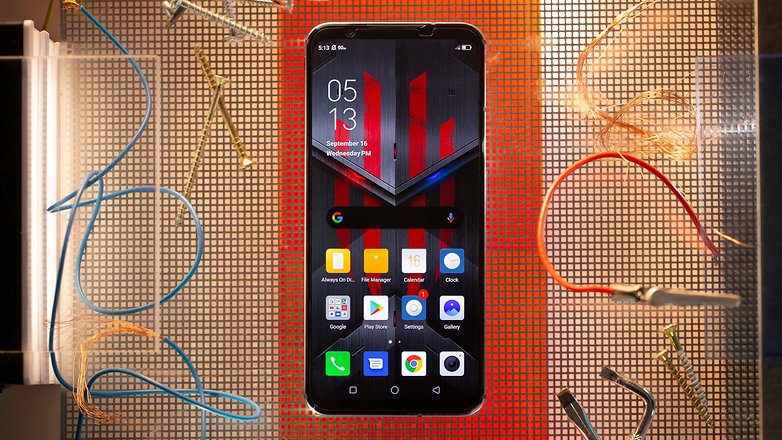
There is also the matter of a 144 Hz refresh rate, where if you've ever tried a screen over 60 Hz, you already know that the in-game experience and during navigation is an incrementally smoother experience with the higher refresh rate. It's not something that's clearly noticeable at first glance though, but after spending some time with it, you will get used to the buttery smoothness.
The RedMagic 5S display also features a 240 Hz touch sampling rate. This means that every time you touch the screen, it will record that touch 240 times per second, even at the slightest touch of your fingers. Under day-to-day use, this is impossible to measure, but in real life, your actions will be far more responsive and accurate.
When I switched from the RedMagic 5S to the Galaxy Z Fold 2 (review coming soon), I felt like my touch sensitivity in Call of Duty Mobile had decreased by 50% as the in-game touch response was "slower".
The only downside to this excellent display is its proneness to reflection which I found to be rather high, especially when I am using it outdoors or under direct sunlight. However, you will tell me that as a serious gamer, you are far happier to spend your time inside a dark room and live off a diet of pizzas and carbonated drinks. Why bother going out and exposing yourself to sunlight? It is exactly such a thought that I (unfortunately) can identify with.
The Snapdragon 865's performance
Logically, RedMagic outperforms many other smartphones out there with its Snapdragon 865 chipset. We didn't get the overclocked Snapdragon 865+ version, but the smartphone performs rather well on the graphical benchmarks compared to the ROG Phone 3 from Asus, which does come with the overclocked Snapdragon 865+ chipset.
I had no problems when it comes to smoothness on any of the games that I played for this review. From FPS titles such as Call of Duty Mobile to adventure games like Sky: Children of the Light to massively multiplayer games like Eve Echoes. The most resource-hungry titles were launched with the default graphics options set to the maximum, and they all ran without any problems.
Nubia RedMagic 5S benchmark comparison:
| RedMagic 5S | Asus ROG Phone 3 | OPPO Find X2 Pro | OnePlus 8 Pro | |
|---|---|---|---|---|
| 3D Mark Sling Shot Extreme ES 3.1 | 7736 | 7724 | 7814 | 7122 |
| 3D Mark Sling Shot Vulkan | 7052 | 7079 | 6261 | 6613 |
| 3D Mark Sling Shot ES 3.0 | 9687 | 9833 | 8854 | 8864 |
| Geekbench 5 (Single / Multi) | 902/3232 | 977 / 3324 | 910 / 3295 | 887/ 3313 |
| PassMark Memory | 27.442 | 28.568 | 35.423 | 27.118 |
| PassMark disk | 88.322 | 124.077 | 71.327 | 50.083 |
With smartphone gaming primarily in mind, the RedMagic 5S offers performance-boosting modes and a truly comprehensive range of customization options via the Game Boost menu. In order to do this, simply flip a small red switch in the top left corner of the smartphone and you're good to go.
You will then directly be sent to the Game Boost option. I know that it sounds really silly, but this gadget with a red Men in Black style button has had its effect on me. The Game Boost functions as a hub and doubles up as a launcher for your games, letting you customize a slew of features such as the internal fan speed, screen refresh rate, or even assigning the trigger buttons.
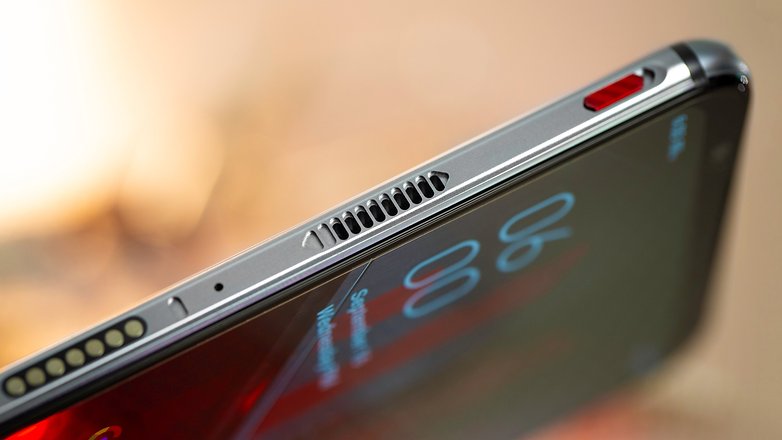
The triggers are purely haptic, but their sensitivity is extremely accurate thanks to a tactile sampling rate of 320 Hz. The Game Boost also offers other options that are really cool although I would doubt that they are capable of being features that will help you clinch the deal.
For example, you can activate an aiming aid mode, which permanently displays a viewfinder on the screen. It's so handy on most FPS titles that it could look like cheating to me. But I'm not going to complain about it.
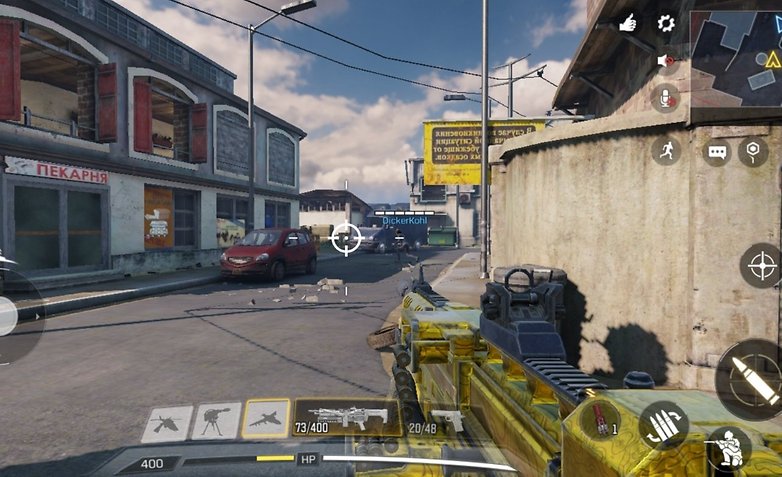
In addition to tracking and setting CPU and other clocks, the Game Boost menu also offers a digital wellness feature that tracks your game time. Depending on your game time stats, the smartphone may suggest that you take a break. This is a somewhat abhorrent concept for any self-respecting gamer, but parents will definitely love this option nonetheless as a 'digital nanny' helps keep tabs on gaming time on this device.
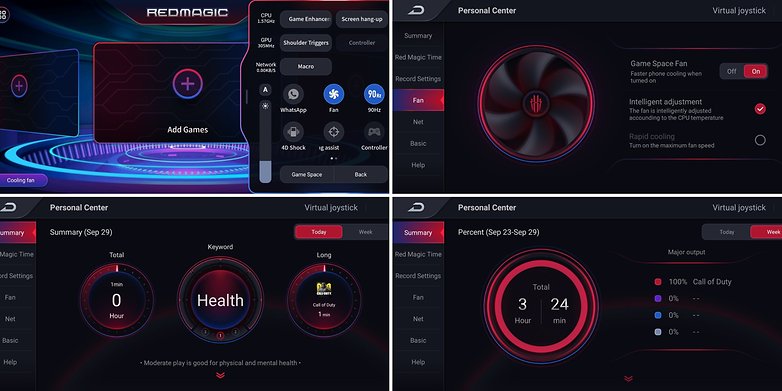
As we will see below, the RedMagic 5S is not a software marvel, but the Game Boost is its most interesting and most successful software feature.
Its solid battery life
The 4,500mAh battery managed to withstand the 144Hz refresh rate and the intensive use that I put the RedMagic 5S through. The PC Mark benchmark that NextPit uses actually simulates intensive use, if not a somewhat realistic scenario, the smartphone lasted for up to 10 hours before falling below the 20% battery life remaining - all this with a 144 Hz refresh rate.
I did use the handset with the display running at 60 Hz refresh rate, and this allowed the RedMagic 5S to last for over 12 hours using the same benchmark. For practical, daily use, it ought to easily last a day and a half on a single charge even if you do use it for active gaming sessions.
With 4 or 5 hours of screen time per day on average, I never had to plug it in at the end of the day. On the other hand, the quick charge leaves a little to be desired. The 18-watt charging adapter (the 50-watt one is exclusive to the Chinese market) allows you to charge it from 20% to 100% battery life in a little more than one hour (1 hour 16 minutes).
A chassis that remains cool to the touch
That's the other great strength of the RedMagic 5S: temperature control. The cooling system in this model is "version 4.0", as Nubia calls it. The internal fan, liquid cooling tube, and graphite materials are still part of the setup as on the RedMagic 5G, but there is a new silver plate that is located on the back of the device which will facilitate heat transfer when using the Ice Dock device (a glorified name for an external fan).
I will tell you more about this device below, but you should know that it is not very useful at all. The copper foil which is located under the back plate right at the back of the smartphone has been enlarged, and the backplate is now made out of glass with some metal underneath. This makes it feel and sound slightly different from a standard glass back.
I didn't dismantle the smartphone to make sure that the cooling system is present as advertised. I also don't have the tools to measure the temperature of the smartphone during use. But overall, I've never felt it overheat as it remained cool to the touch, even after several consecutive hours of play.
Where some smartphones go through thermal throttling, which involves the deliberate slowing of performance to limit overheating, I was able to really 'abuse' the RedMagic 5S without having it break a sweat.
It's quite simply one of the most effective smartphones around when it comes to running at a cool temperature.
What I didn't like about the Nubia RedMagic 5S...
Its incomprehensible ergonomics
I'm not referring to the design with a silver-colored back with silk designs and numerous aggressive shapes that are adorned with LEDs, which is rather discreet but does carry a very strong gaming connotation that may appeal to some users. I'm not talking about the general grip of the smartphone either, which is pretty good.
The smartphone has a certain style to it - a personality, if you will. I'm talking about more than questionable choices for the button placement and the number of accessories that when detached from the RedMagic 5S, are not the best things to look at. However, let's begin with the worst of the lot: the buttons.
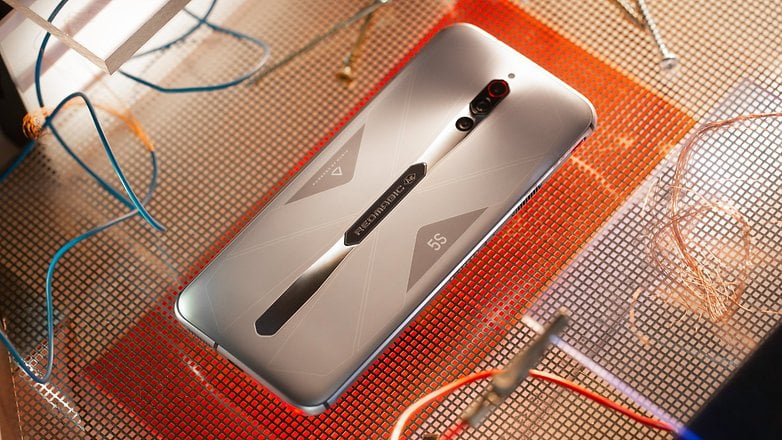
The power button is located below the volume knob when holding the device in portrait mode, which is common on other smartphones but is particularly annoying when using the RedMagic 5S. Not only does this button interfere with the "clips" to attach your PS4 or Xbox One controller, but it will also lock your smartphone when you attempt to attach the "Ice Dock", the external fan - due to the unnecessary pressure placed on it.
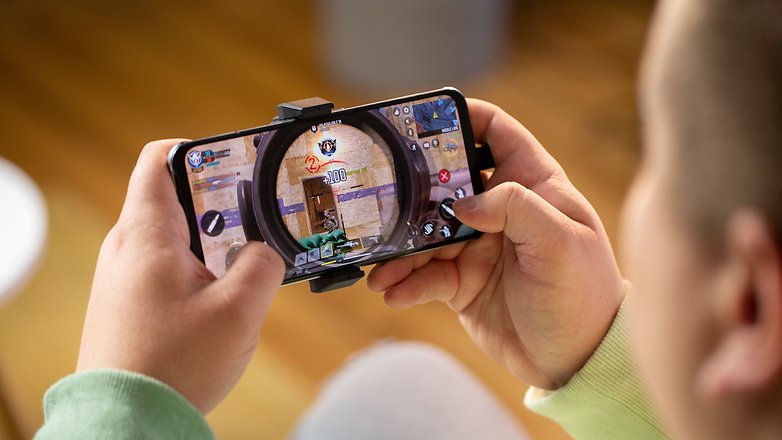
And this "Ice Dock" fan, let's talk about that. Not only do I find its usefulness quite dubious in terms of cooling, but I also found it very annoying once it is plugged into the smartphone.
It has to be connected to the USB-C port of the smartphone, and this is done via a rather strange mechanism that rests on a short strap that connects the fan to the smartphone. But don't worry, the fan also has a USB-C input so you can still charge your smartphone simultaneously should it run low on juice.
The annoying thing is this: it takes up too much space on the back of the RedMagic 5S. Yes, I have big fingers and hands that hail from the Cro-Magnon era, but even for a normal human, I doubt the ergonomics are optimal. I would have preferred a port on the lower-left edge of the smartphone, like on the ROG Phone 3 and with a thinner fan. In addition, the smartphone itself already does a decent job staying cool when pushed to the limits, so is a fan accessory really all that necessary?
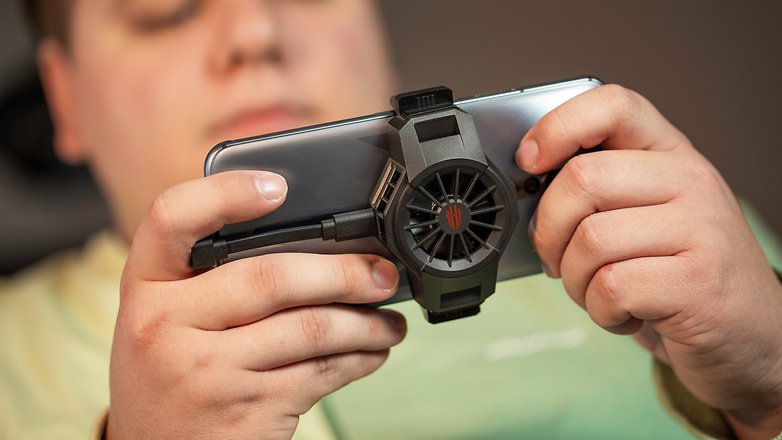
RedMagic UI 3.0 interface
When I received the RedMagic 5S for a review session, the manufacturer warned me that the software overlay was not the final version. In the few reviews that I have come across for this smartphone, I've read criticisms about the fluidity of the interface, problems with the launcher, the application drawer that doesn't open, or worse - applications that freeze.
Personally, I've never encountered such problems. The navigation is quite fluid and the interface of the RedMagic UI 3.0 overlay is close to an Android stock version, just like many other handsets. While it's not visually flashy, it does have some useful features.
I must say this - the picture-in-picture mode, a window mode, internal ventilation management, screen saver customization, or having an "always-on display" option are all rather useful. But I noticed that the window mode is incompatible with most of the apps I use on a daily basis (Chrome, Gmail, Twitter, etc.).
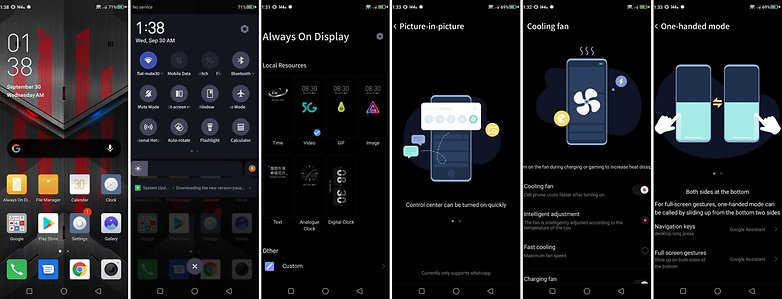
And the interface is clearly not as smooth as on the other flagships I've reviewed in the past, despite a very light overlay. The fingerprint reader is quite slow to respond and overall not very accurate.
I think all of these everyday performance features contrast heavily with the really successful Game Boost mode that makes the RedMagic's user interface could benefit from an optimization exercise. As I write this, I still have the June security patch, which is far from reassuring.
Another feature to look into is the neo-AI. The system will learn from your behavior and usage pattern, relying on redistribution of system resources in order to launch the most frequently played games faster. During the night, the system uses this time-out to clear out its system memory. neo AI also keeps track of rarely used applications and freezes them, or in other words, suspends all processes for those applications in order to save power.
Its camera module is mediocre
This is clearly not the killer-feature of a gaming smartphone, and the RedMagic 5S confirms the trend. The main camera uses a 64 MP sensor that has an f/1.8 aperture. The sensor itself is 1/1.72" and 0.8µm pixels.
There is also an 8 MP ultra-wide angle sensor and a 2 MP macro (which is practically useless) sensor, respectively. As for the selfie camera, it is a single 8 MP sensor with an aperture of f/2.0.
And overall, the photo rendering is really not good. In daylight, and under good lighting conditions, the shots lack detail and sharpness. Dynamic range management leaves something to be desired, especially when switching from one sensor to another.
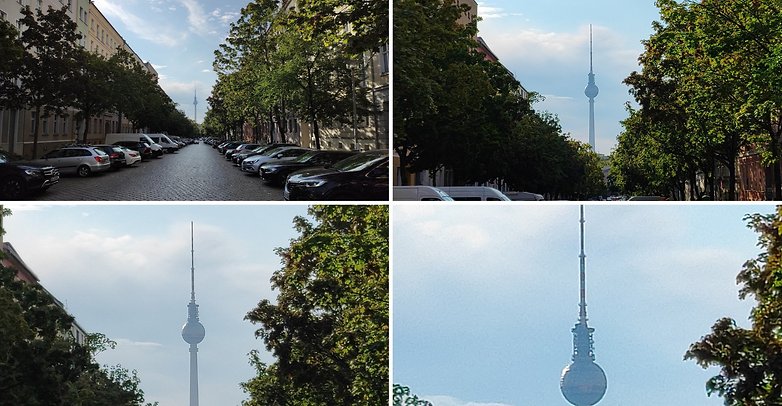
You can see clear differences in exposure between wide-angle and ultra-wide-angle photos. Strangely enough, you have to go through the "Pro" mode to use ultra-wide-angle mode, which is totally counter-intuitive.
The RedMagic 5S does not have a dedicated telephoto lens. The 3x, 5x, and 10x zooms are purely digital and are achieved by cropping the center of the image taken with the 64 MP sensor. This inevitably causes the image to degrade significantly and you can see plenty of noise that drowns out the image details.
At night, the RedMagic does not illuminate the scene sufficiently. We end up with photos that are difficult to use, and the dedicated night mode doesn't manage to limit noise. The scene is more visible, but it is spoiled by the presence of digital mush and software smoothing that spreads the pixels from one end to the other.

Finally, I couldn't get the portrait mode to work well. I felt like all the photos came out without blurring the background. Either the effect was too subtle for my damaged eyes from hours spent in front of a screen, either from play or work, or it simply failed to function as expected.
In any case, it is an absolute disaster for the RedMagic 5S when it comes to photo-taking.
Conclusion
If you are looking for an affordable flagship that retails for less than €600, there are obviously better alternatives out there. What I mean is this: there are smartphones at the same price, with similar specifications but offer a far more complete and balanced user experience. I'm thinking of the Realme X50 Pro or Xiaomi's Poco F2 Pro (which our editors still haven't received).
But this is clearly not the market that ZTE subsidiary Nubia is targeting at with the RedMagic 5S. This smartphone fully assumes that the gaming smartphone market is a viable one, and it is a segment that the company has decided to throw its lot with and cater to. In terms of performance and customization of the gaming experience, it's a success.
The RedMagic is also €300 cheaper than the market leaders in the gaming segment such as the ROG Phone 3 (€999) or the BlackShark 3 Pro (€899).
On the other hand, where the ROG Phone 3 has achieved a certain balance, as it cleverly combines gaming and consumer smartphone features together in order to satisfy the more casual gamers who want a more balanced product, the RedMagic 5S has wedged itself in a very narrow corridor without any wiggle room - that is, mobile gaming.
So if gaming is your main priority or even close to exclusive use when it comes to a smartphone, then the RedMagic 5S is a good choice. But I think that this is something that only a select few people would concern themselves with, so much so that it cannot be a selling point for the masses. Perhaps I might be wrong on this point, so feel free to call me out in the comments.
Also read on NextPit:



















wow
-
Admin
Oct 3, 2020 Link to commentPretty impressive, I am sure, for gamers but these days a battery like that is normal and not monstruous